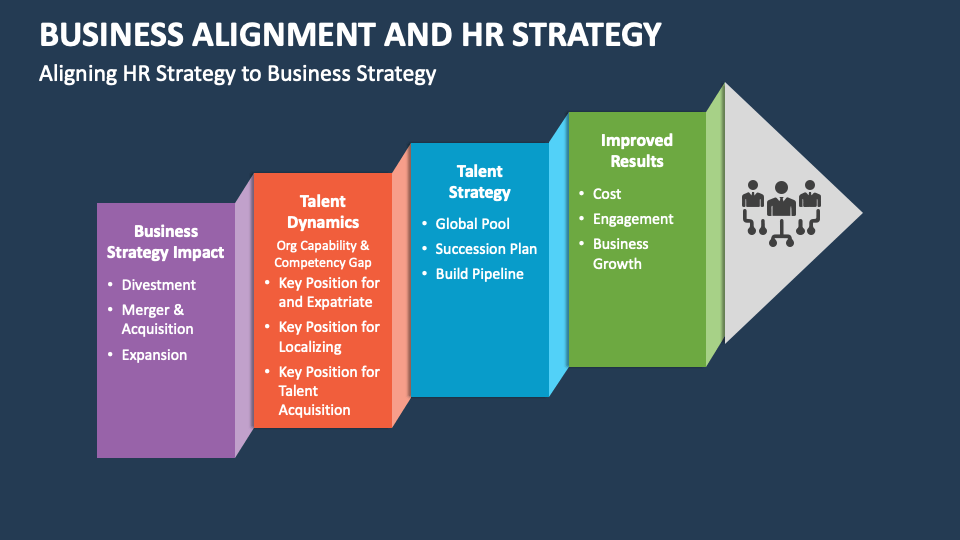In the grand orchestra of corporate success, business strategy plays the conductor, guiding the diverse instruments towards a harmonious symphony. However, for this symphony to reach its crescendo, there’s another crucial player on stage—the Human Resources (HR) strategy. Together, these strategies create a powerhouse that propels companies to excellence. In this exploration, we’ll delve into the essence of business strategy, the nuances of HR strategy, and the magical fusion that occurs when the two join forces. Brace yourself for a journey through the boardrooms and corridors of some of the world’s most successful companies.
Understanding Business Strategy
At its core, business strategy is the roadmap that guides an organization towards its goals and objectives. It’s the art of making choices—deciding where to compete, how to differentiate, and how to allocate resources to achieve a competitive advantage. In simpler terms, it’s the game plan that ensures a company’s long-term success in the market.
Apple Inc.: The Art of Differentiation
Take Apple Inc., for example. Renowned for its innovation and design, Apple’s business strategy revolves around differentiation. From sleek iPhones to cutting-edge MacBooks, the company positions itself as a premium brand with a focus on quality, design, and user experience. This strategic choice has catapulted Apple to the zenith of the tech industry.
Tesla: A Visionary Future
Elon Musk, the visionary behind Tesla and SpaceX, exemplifies the role of leadership in strategy fusion. Musk’s ambitious business strategies, from revolutionizing the automotive industry to colonizing Mars, require a workforce that shares his vision. Tesla’s HR strategy focuses on attracting and retaining top engineering talent, aligning the workforce with Musk’s audacious goals.
HR Strategy: Nurturing the Human Capital
Now, let’s shift our focus to the HR strategy—the backbone of any organization’s success. HR strategy is about managing the company’s most valuable asset: its people. It involves the formulation of policies, practices, and initiatives to attract, develop, and retain top talent. A well-crafted HR strategy aligns the workforce with the broader organizational goals.
Google: Cultivating Workplace Well-Being
Google, with its legendary workplace culture, is a prime example. The company’s HR strategy places a strong emphasis on employee well-being, innovation, and a conducive work environment. By offering perks like flexible schedules, on-site gyms, and creative workspaces, Google has fostered a culture that attracts and retains top talent.
Zappos: Cultural Alignment as a Competitive Edge
The organizational culture acts as the glue that binds the workforce to the company’s mission, vision, and values. When employees resonate with the culture, they become enthusiastic ambassadors of the business strategy. Consider the cultural phenomenon that is Zappos. The online shoe and clothing retailer have built a reputation for its unique and vibrant culture. CEO Tony Hsieh prioritized cultural fit in hiring, ensuring that employees aligned with the company’s core values. This cultural alignment has contributed to Zappos’ success in delivering exceptional customer service, a key component of its business strategy.
The Fusion: Where Business and HR Strategies Converge
The true magic happens when business and HR strategies converge seamlessly. Imagine the business strategy as the destination and HR strategy as the vehicle that gets you there. Companies that master this fusion create a powerful synergy that propels them ahead of the competition.
Southwest Airlines: Operational Excellence through Empowered Workforce
Let’s dissect this synergy with the example of Southwest Airlines. Known for its low-cost model and exceptional customer service, Southwest’s business strategy centers around operational efficiency. Now, here’s where the fusion with HR strategy becomes evident. The company invests heavily in training and developing its employees, empowering them to make quick decisions and providing stellar customer service. The result? A workforce aligned with the business strategy, driving operational excellence and customer satisfaction.
Microsoft: Transformative Leadership and HR Strategy
In the ever-evolving business landscape, companies must innovate not only in their products and services but also in their approach to talent acquisition and development. Forward-thinking organizations recognize that the war for talent is won by those who can spot potential, foster growth, and adapt to change.
Microsoft, a company that has undergone a remarkable transformation in recent years, exemplifies this concept. Satya Nadella, Microsoft’s CEO, spearheaded a shift in the company’s culture and strategy. The HR strategy played a pivotal role in this transformation, emphasizing a growth mindset and a focus on learning. Microsoft’s acquisition of LinkedIn further exemplifies how a strategic move in talent acquisition can bolster the overall business strategy.
Strategic Workforce Planning: A Key Pillar
To achieve this fusion, strategic workforce planning is paramount. This involves aligning the organization’s human capital with its strategic goals. Proactive companies understand that a strategic workforce plan ensures they have the right people, with the right skills, in the right positions at the right time.
IBM: Adapting to Technological Shifts
For instance, IBM, a technology giant with a rich history, faced the challenge of adapting to the fast-paced landscape of cloud computing. The company strategically invested in employee training and development, upskilling its workforce to meet the demands of the evolving technology landscape. This proactive approach ensured that IBM’s HR strategy aligned with its business strategy, positioning the company as a leader in the cloud computing space.
Innovative Recruitment and Talent Development
In the ever-evolving business landscape, companies must innovate not only in their products and services but also in their approach to talent acquisition and development. Forward-thinking organizations recognize that the war for talent is won by those who can spot potential, foster growth, and adapt to change.
Amazon: Data-Driven Talent Strategy
Amazon, known for its data-driven approach, uses metrics extensively to measure the success of its strategies. From customer satisfaction scores to employee turnover rates, Amazon leverages data to continuously refine its business and HR strategies. This analytical approach has contributed to the company’s agility and success in the highly competitive e-commerce market.
Conclusion: The Ongoing Symphony of Success
In the grand narrative of business success, the fusion of business and HR strategies is not a one-time event but an ongoing symphony. As markets evolve, technologies advance, and workforce dynamics shift, companies must adapt their strategies to stay ahead.
The examples discussed—from Apple to Zappos, Southwest Airlines to Amazon, Microsoft to Tesla—highlight that there is no one-size-fits-all approach. Successful companies understand their unique strengths, challenges, and opportunities, crafting strategies that resonate with their organizational DNA.
As we conclude this exploration, it’s clear that the fusion of business and HR strategies is not just a strategic imperative but a cultural necessity. When these strategies intertwine, guided by visionary leadership, nurtured by innovative HR practices, and fortified by a cohesive organizational culture, the result is a symphony of success that resonates not only in boardrooms but also in the hearts and minds of employees and customers alike. The orchestration of business and HR strategies is the secret sauce that transforms companies from mere entities into legends, leaving an indelible mark on the ever-evolving business landscape.











